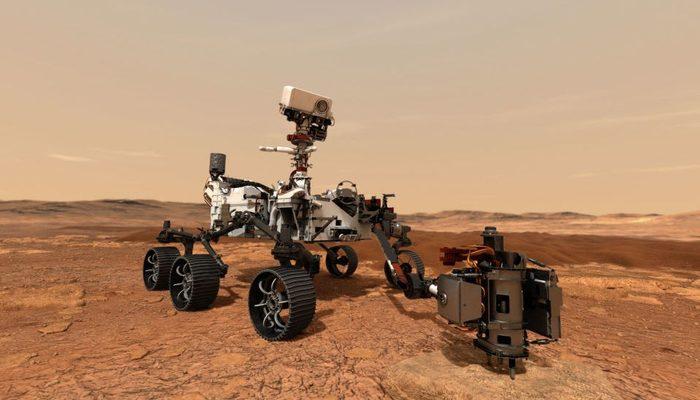The Perseverance team announced in a message shared on Twitter on Tuesday that they came across pieces of the thermal blanket that was wrapped around the vehicle to protect it from extreme weather changes when it landed on the surface of Mars.
Stating that they encountered this sight 2 kilometers from the point where the robot landed last year, the team said, “It is very surprising to find this here. Did this piece come here during the landing or was it carried here by the wind?” used the expressions.
HUMAN WASTE IS NOT THE FIRST TIME ON THE SURFACE OF MARS
In April, the helicopter named Ingenuity captured the remnants of the technical material used for both it and Perseverance’s landing.
Traces of trash in space are a growing concern for space agencies.
Parts such as boats, shovels, and vehicles left on the lunar surface by the Apollo spacecraft, left behind from space missions, can cause pollution of untouched planetary structures.
As the Earth’s orbit is also crowded by satellites and space junk, journeys from Earth to space become more dangerous.
Also, degraded satellites, screwdrivers, parachutes or other debris surrounding Earth pose a great risk to the International Space Station.
MEASURES TAKEN TO PROTECT SPACE FROM POLLUTION ARE VERY LIMITED
Existing laws on space have not gone far beyond the Outer Space Treaty signed in 1967.
Aparna Venkatesan, professor of astronomy at the University of San Francisco, says that the measures to be taken to prevent environmental pollution in space are to define space as the common heritage of humanity.
The Perseverance spacecraft completed its seven-month journey in February 2021 and successfully landed on Mars.
The one-ton vehicle had landed in a crater called Jezero, which was thought to have been a giant lake billions of years ago.
The vehicle searches for traces of past life on the Red Planet. The data obtained by Perseverance, which can obtain microscopic images thanks to the equipment on it, is evaluated by sending it to Earth.
Prior to Perseverance, research on the habitability of more planets was conducted in Mars missions.
In the 2000s, Spirit and Opportunity surveyed the planet, and recently Curiosity revealed that Mars was once a hotter and wetter planet.
Source: BBC
 He wanted to pull the ambulance in front of the Ministry of Health and meet with Minister Koca! A statement came from the hospital: ‘Even though there was no patient in the vehicle…’–
He wanted to pull the ambulance in front of the Ministry of Health and meet with Minister Koca! A statement came from the hospital: ‘Even though there was no patient in the vehicle…’–
 Great tension in Istanbul! IMM policemen and Üsküdar policemen had a fistfight–
Great tension in Istanbul! IMM policemen and Üsküdar policemen had a fistfight––


